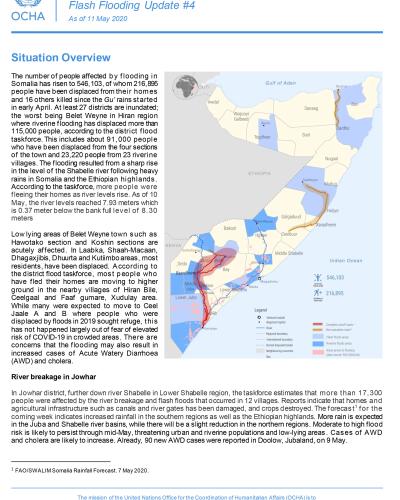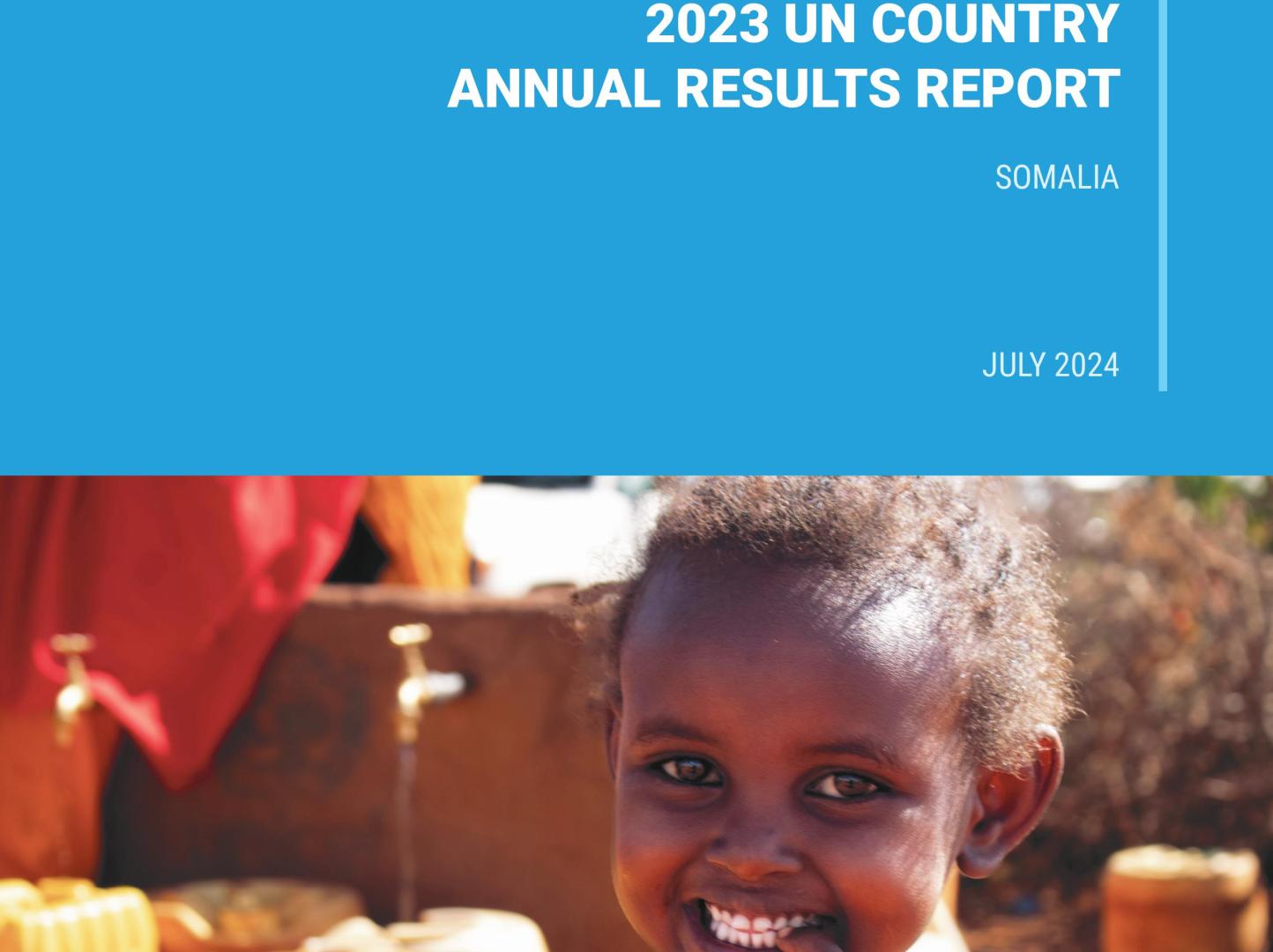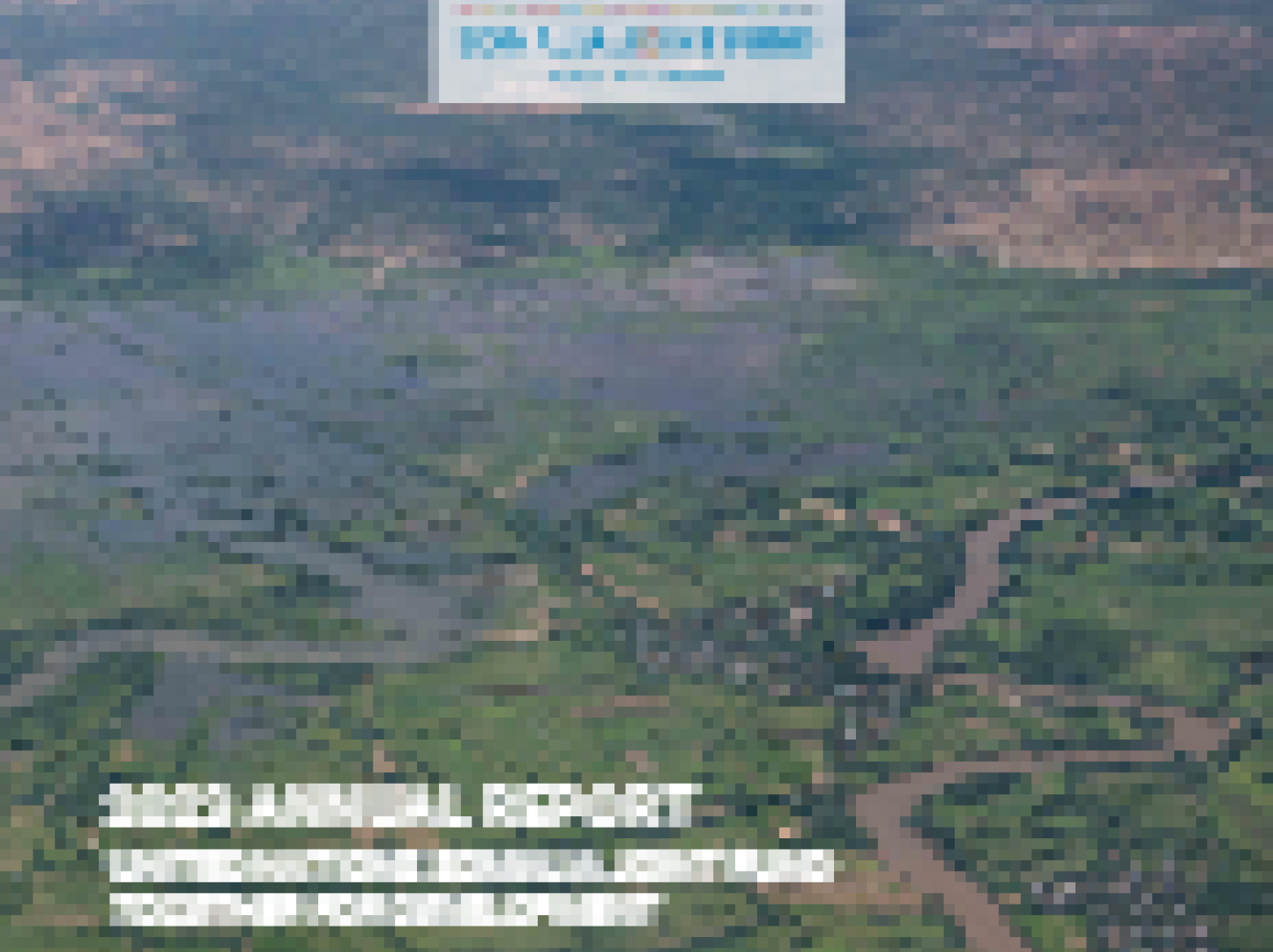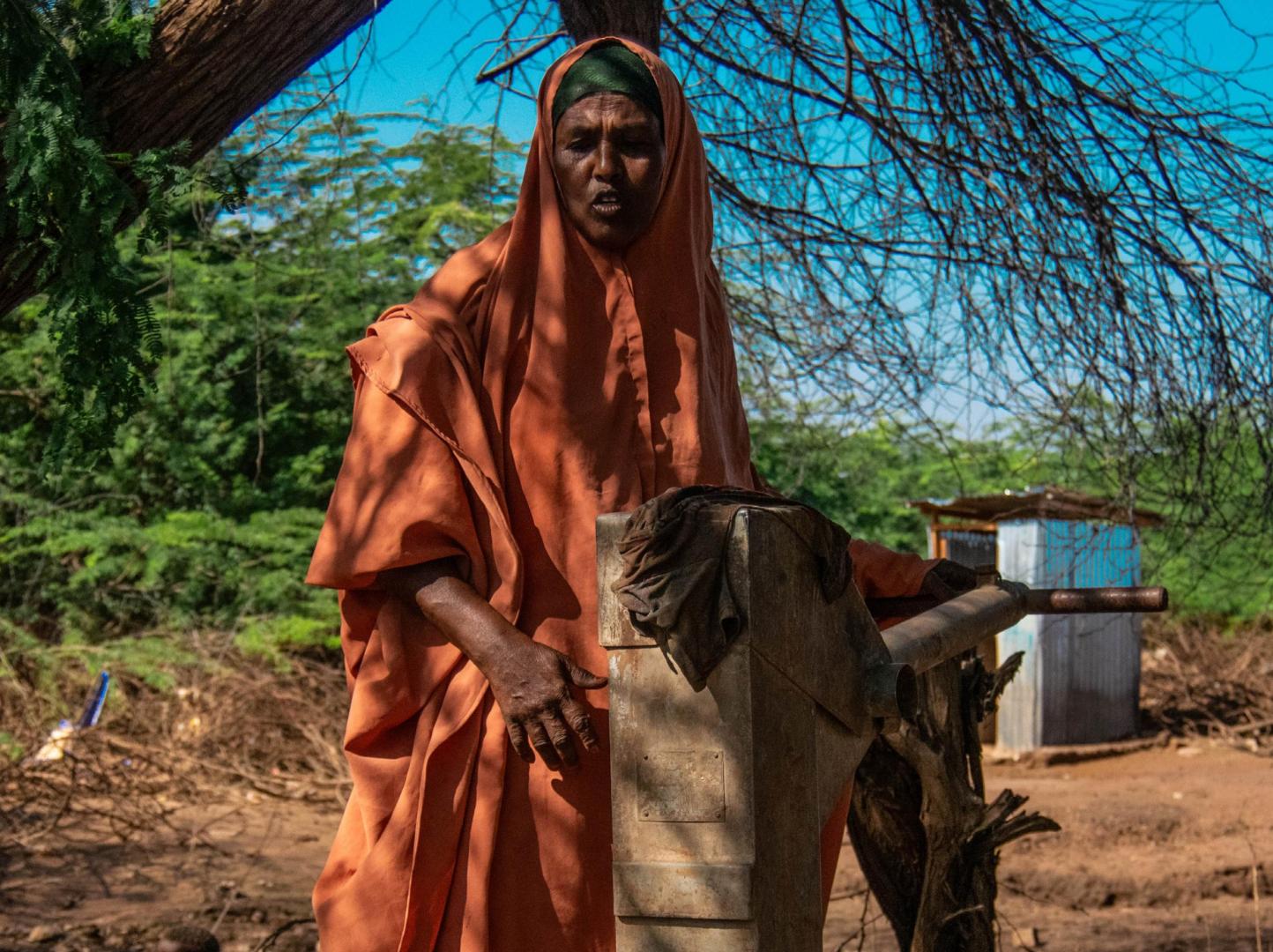Somalia: Flash Flooding Update #4, As of 11 May 2020

Situation Overview
The number of people affected by flooding in Somalia has risen to 546,103, of whom 216,895 people have been displaced from their homes and 16 others killed since the Gu’ rains started in early April. At least 27 districts are inundated; the worst being Belet Weyne in Hiran region where riverine flooding has displaced more than 115,000 people, according to the district flood taskforce. This includes about 91,000 people who have been displaced from the four sections of the town and 23,220 people from 23 riverine villages. The flooding resulted from a sharp rise in the level of the Shabelle river following heavy rains in Somalia and the Ethiopian highlands. According to the taskforce, more people were fleeing their homes as river levels rise. As of 10 May, the river levels reached 7.93 meters which is 0.37 meter below the bank full level of 8.30 meters
Low lying areas of Belet Weyne town such as Hawotako section and Koshin sections are acutely affected. In Laabka, Shaah-Macaan, Dhagaxjibis, Dhuurta and Kutiimbo areas, most residents, have been displaced. According to the district flood taskforce, most people who have fled their homes are moving to higher ground in the nearby villages of Hiran Bile, Ceelgaal and Faaf gumare, Xudulay area. While many were expected to move to Ceel Jaale A and B where people who were displaced by floods in 2019 sought refuge, this has not happened largely out of fear of elevated risk of COVID-19 in crowded areas. There are concerns that the flooding may also result in increased cases of Acute Watery Diarrhoea (AWD) and cholera.
River breakage in Jowhar
In Jowhar district, further down river Shabelle in Lower Shabelle region, the taskforce estimates that more than 17,300 people were affected by the river breakage and flash floods that occurred in 12 villages. Reports indicate that homes and agricultural infrastructure such as canals and river gates has been damaged, and crops destroyed. The forecast for the coming week indicates increased rainfall in the southern regions as well as the Ethiopian highlands. More rain is expected in the Juba and Shabelle river basins, while there will be a slight reduction in the northern regions. Moderate to high flood risk is likely to persist through mid-May, threatening urban and riverine populations and low-lying areas . Cases of AWD and cholera are likely to increase. Already, 90 new AWD cases were reported in Doolow, Jubaland, on 9 May.
The rains have intensified at a time that Somalia has confirmed over 1,000 cases of COVID-192 and is working with partners to contain the spreading pandemic. The country is also facing the worst desert locust infestation in 25 years with new swarms reported in Somaliland, Puntland and Galmudug states. Despite these threats, funding for humanitarian operations in Somalia remains very low. As of 10 May, the revised 2020 Somalia Humanitarian Response Plan (HRP) is only 16 per cent funded (US$200 million out of $1,1254.3 million)






